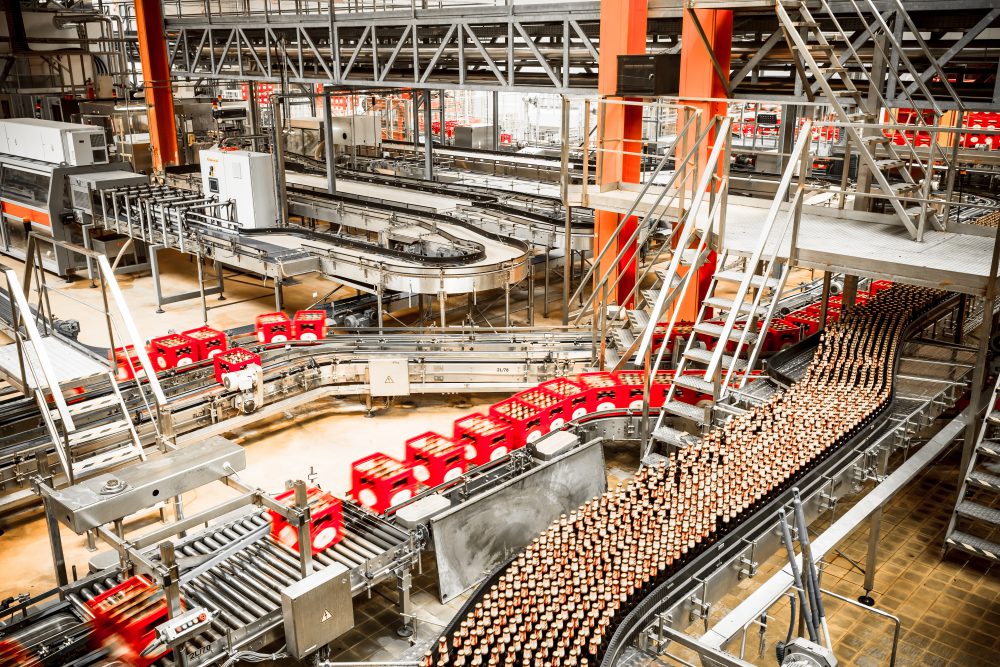Food and beverage manufacturing has been one of the slower industries to adopt new technology. While machine learning and artificial intelligence may sound daunting, this technology offers a valuable return on investment.
Here are three major ways to benefit from big data tools in your processing plant.
1. Detecting choke points and defects
Manufacturing execution systems (MES) have long been an integral part of food and beverage processing, but predictive analytics takes this tool to the next level. By leveraging numerous data points, these platforms can now analyze how current resources are being used and how your process can be improved by detecting patterns that may not otherwise be obvious.
For example, if a particular line is supposed to produce 100 turkeys per minute, but the actual output is only 85, the MES can conduct high-speed calculations to pinpoint a choke point in your process. It may suggest a process machine is not optimized or that it requires maintenance.
In a beverage facility, the MES may identify that a packaging defect that seems to occur at random actually has a distinct pattern. As the system receives more data over time, it can begin predicting when the defects occur, and why, so it can be targeted and fixed.
Integrating internet-connected sensors and predictive analytics into your MES system is one of the greatest uses of big data in a facility. It allows managers to monitor manufacturing data in real time and ultimately minimizes fluctuations in product quality and output.
2. Anticipating demand to maximize throughput
By aggregating data from distribution centers around the country, artificial intelligence tools can predict demand from one region to another, allowing manufacturers to know where to send more product and when. This minimizes excess inventory, which reduces product waste, especially for items with a shorter shelf life.
Machine learning can also help manufacturers plan for demand spikes. Many consumer trends are cyclical: more turkeys are bought near Thanksgiving, demand for eggs is higher around Easter, etc. By analyzing data, processors can have a better understanding of how soon to ramp up production and where to ship more product to meet demand. Artificial intelligence systems can quickly process these large data sets and provide recommendations accordingly. This reduces the pressure on manufacturers and minimizes surge production, because a company has better information on when product is needed and where.
3. Predictive maintenance to prevent downtime
Again, combining your data with an artificial intelligence platform can reveal issues that may not seem obvious to human observation.
For example, you may be meeting your target production rate, but perhaps there is a slight increase in rejected products. Managers can now quickly track down the specific equipment responsible for the anomaly and dispatch maintenance crews to address the problem before it gets worse.
By using predictive analytics to estimate when machines might have an issue, you can schedule downtime rather than waiting for it to break unexpectedly (perhaps during a peak production time).
Unscheduled downtime can spell costly disaster for a manufacturer, and knowing that the culprit of the failure was a relatively easy fix only adds salt to the wound. I know of a plant that once shut down a line for an entire day because the facility didn’t have a $15 replacement bearing on hand (and the part shipped from Germany).
With today’s predictive analytics, your platform can tell you exactly how many units of a given part you should have on hand at any given time. You can even configure the system to automatically reorder parts when inventory dips below a certain threshold — ensuring that you’ll never be caught off guard.
Next steps: Incorporating predictive analytics tools
Where do you get started? There are some out-of-the-box platforms available, but many larger companies choose to develop proprietary systems. You also need to determine if you have enough data to supply a predictive analytics systems:
- What data do you want to collect?
- What sensors will you need?
- Does your current infrastructure support this technology?
A lot of older equipment can be upgraded to collect data — you don’t necessarily have to replace all of your equipment to get up to speed.
The bottom line is: If you’re going to invest in predictive analytics, you must have the right people to help you succeed, whether that’s an outside partner or an in-house employee.
Artificial intelligence is still in its infancy, so as the technology develops, it’s applications for food and beverage manufacturers will, too.
Have questions about predictive analytics in your facility? Comment below or email me at foodforthought@stellar.net



